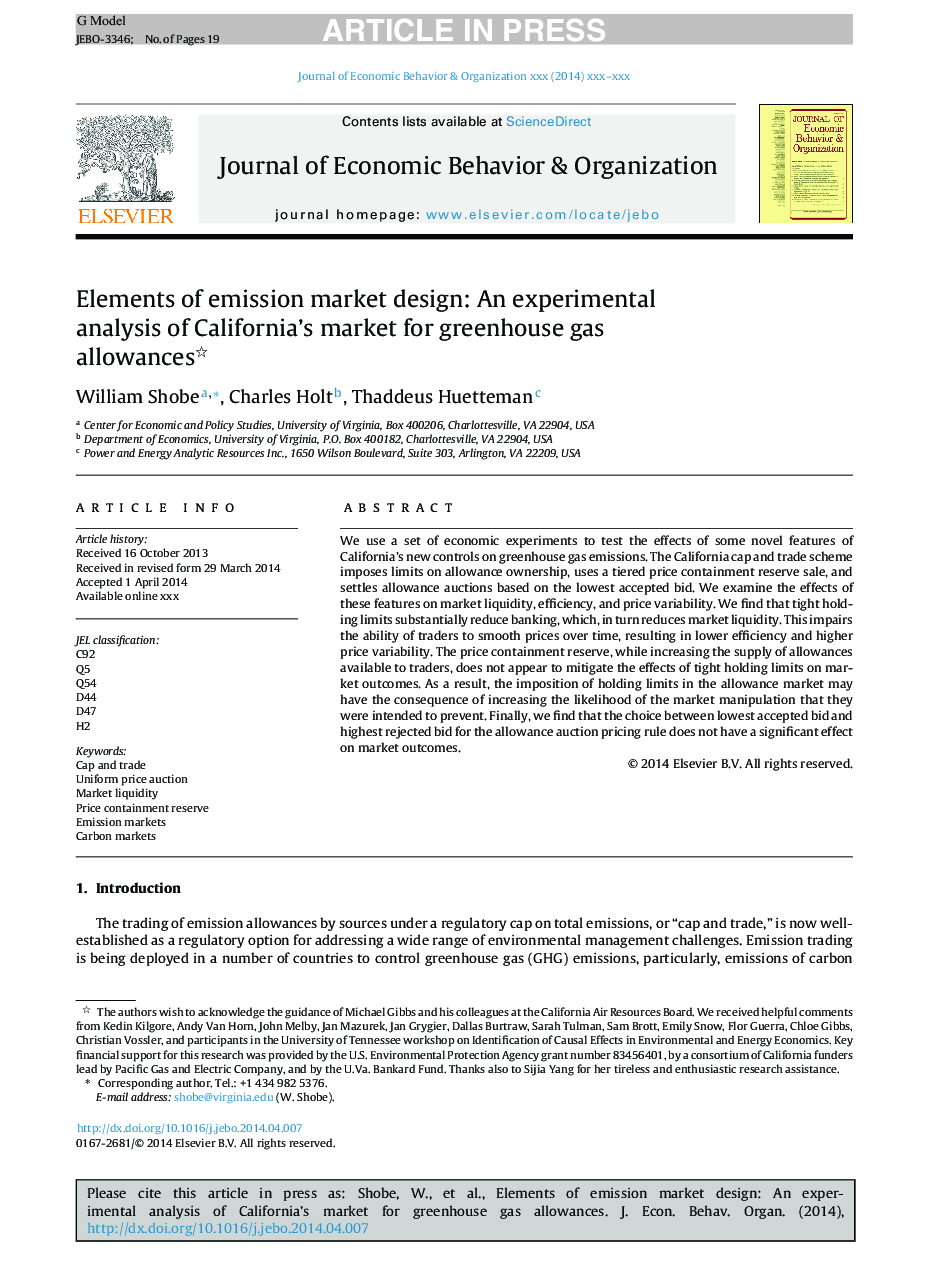| Article ID | Journal | Published Year | Pages | File Type |
|---|---|---|---|---|
| 10437684 | Journal of Economic Behavior & Organization | 2014 | 19 Pages |
Abstract
We use a set of economic experiments to test the effects of some novel features of California's new controls on greenhouse gas emissions. The California cap and trade scheme imposes limits on allowance ownership, uses a tiered price containment reserve sale, and settles allowance auctions based on the lowest accepted bid. We examine the effects of these features on market liquidity, efficiency, and price variability. We find that tight holding limits substantially reduce banking, which, in turn reduces market liquidity. This impairs the ability of traders to smooth prices over time, resulting in lower efficiency and higher price variability. The price containment reserve, while increasing the supply of allowances available to traders, does not appear to mitigate the effects of tight holding limits on market outcomes. As a result, the imposition of holding limits in the allowance market may have the consequence of increasing the likelihood of the market manipulation that they were intended to prevent. Finally, we find that the choice between lowest accepted bid and highest rejected bid for the allowance auction pricing rule does not have a significant effect on market outcomes.
Related Topics
Social Sciences and Humanities
Economics, Econometrics and Finance
Economics and Econometrics
Authors
William Shobe, Charles Holt, Thaddeus Huetteman,
